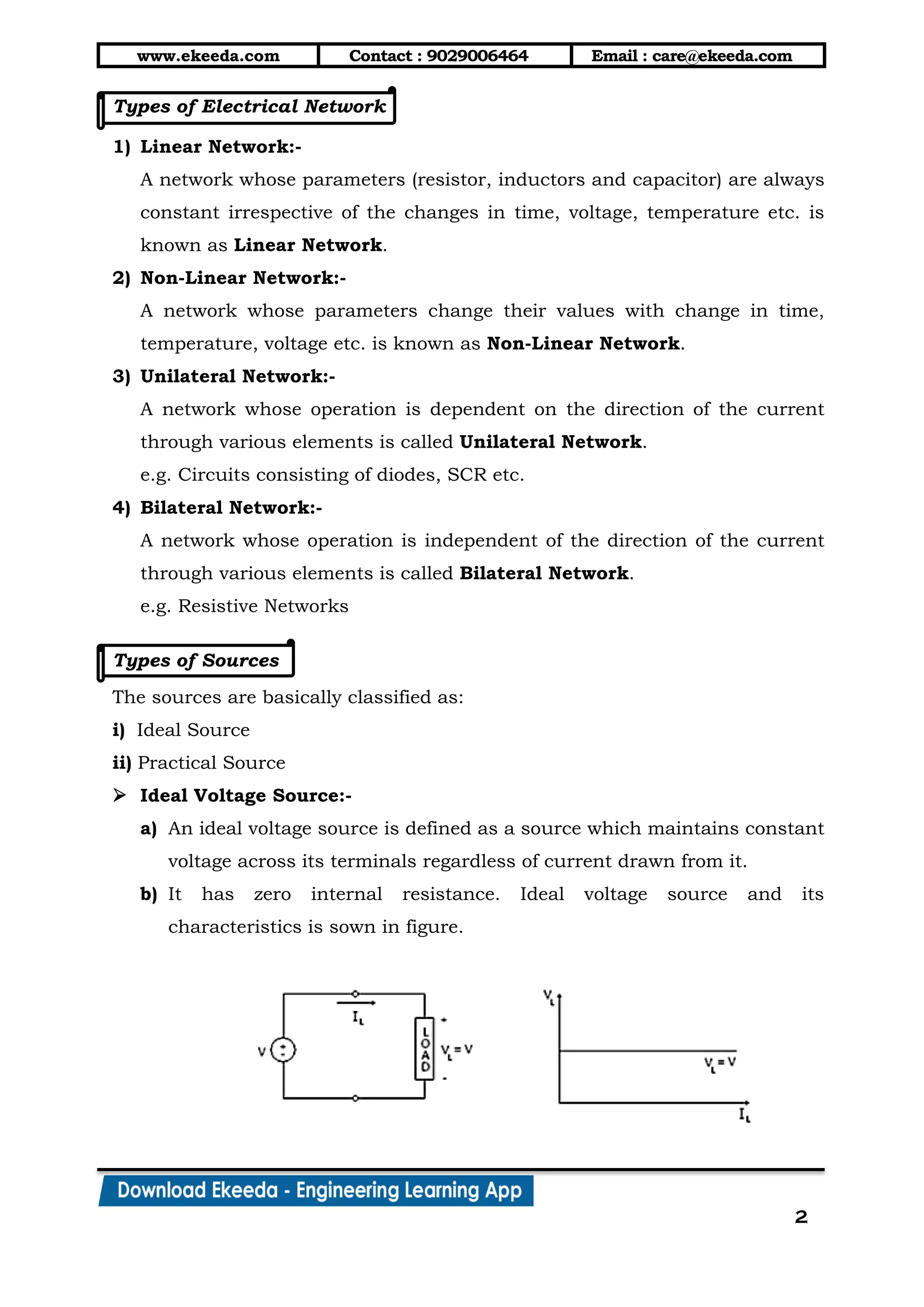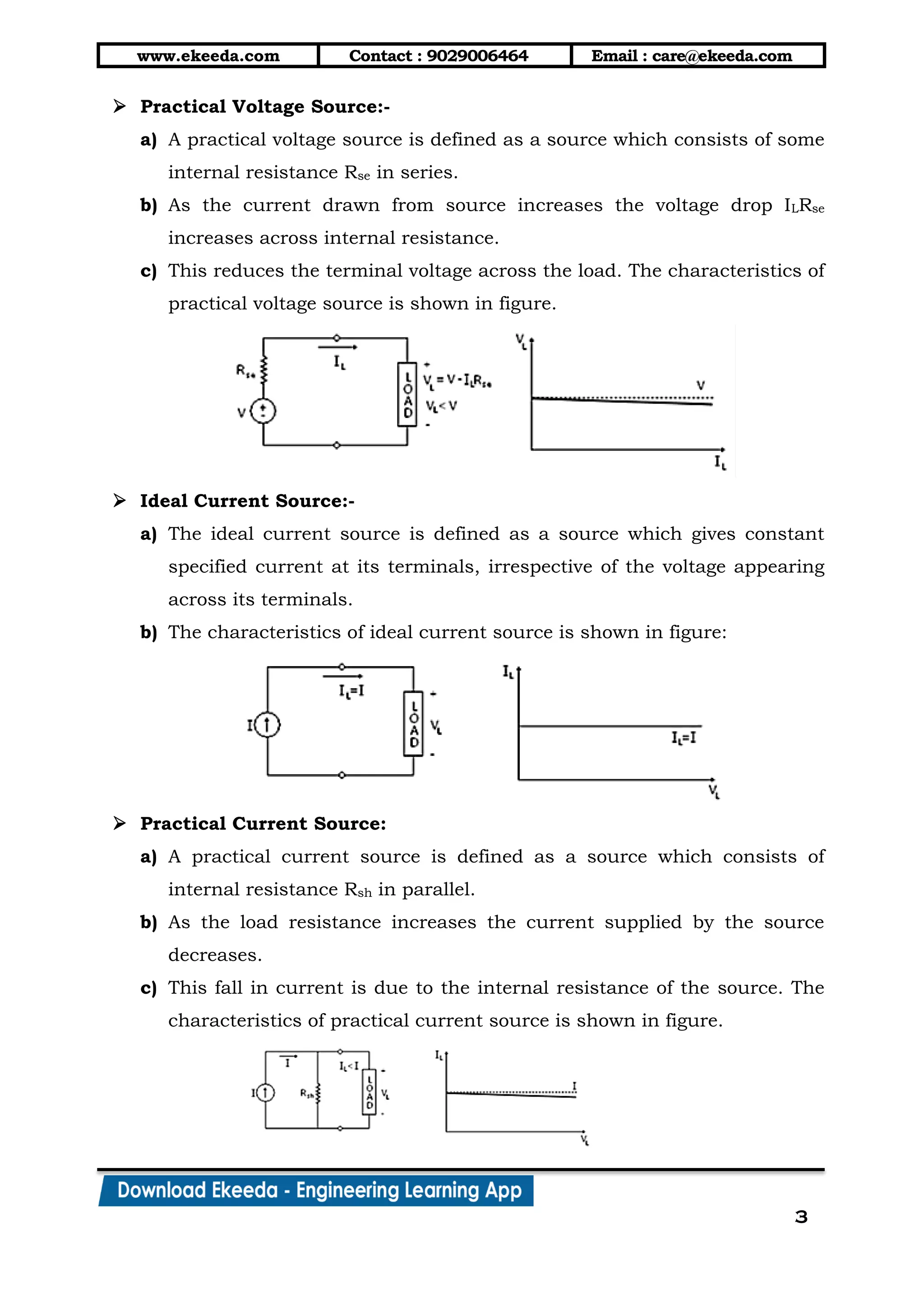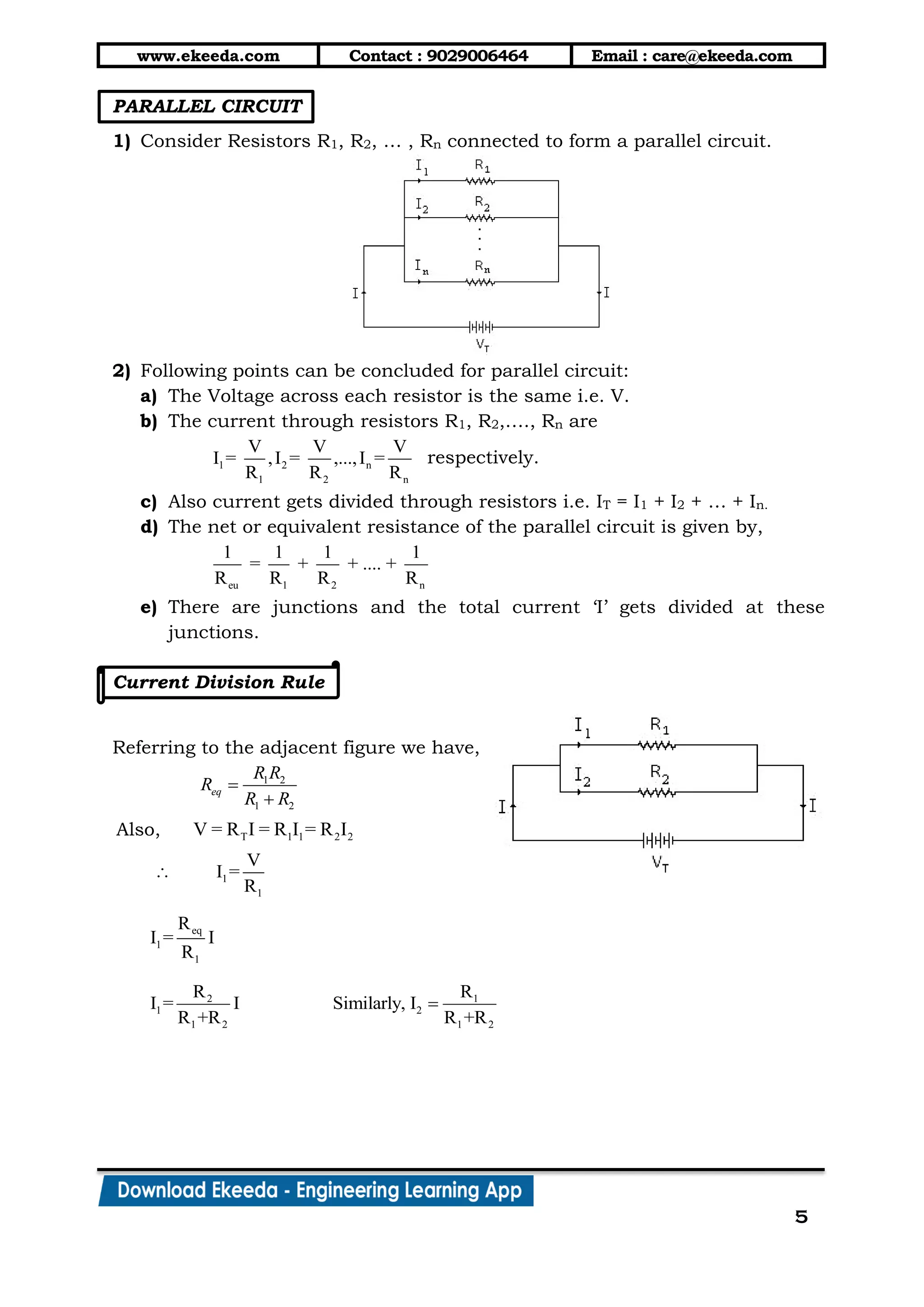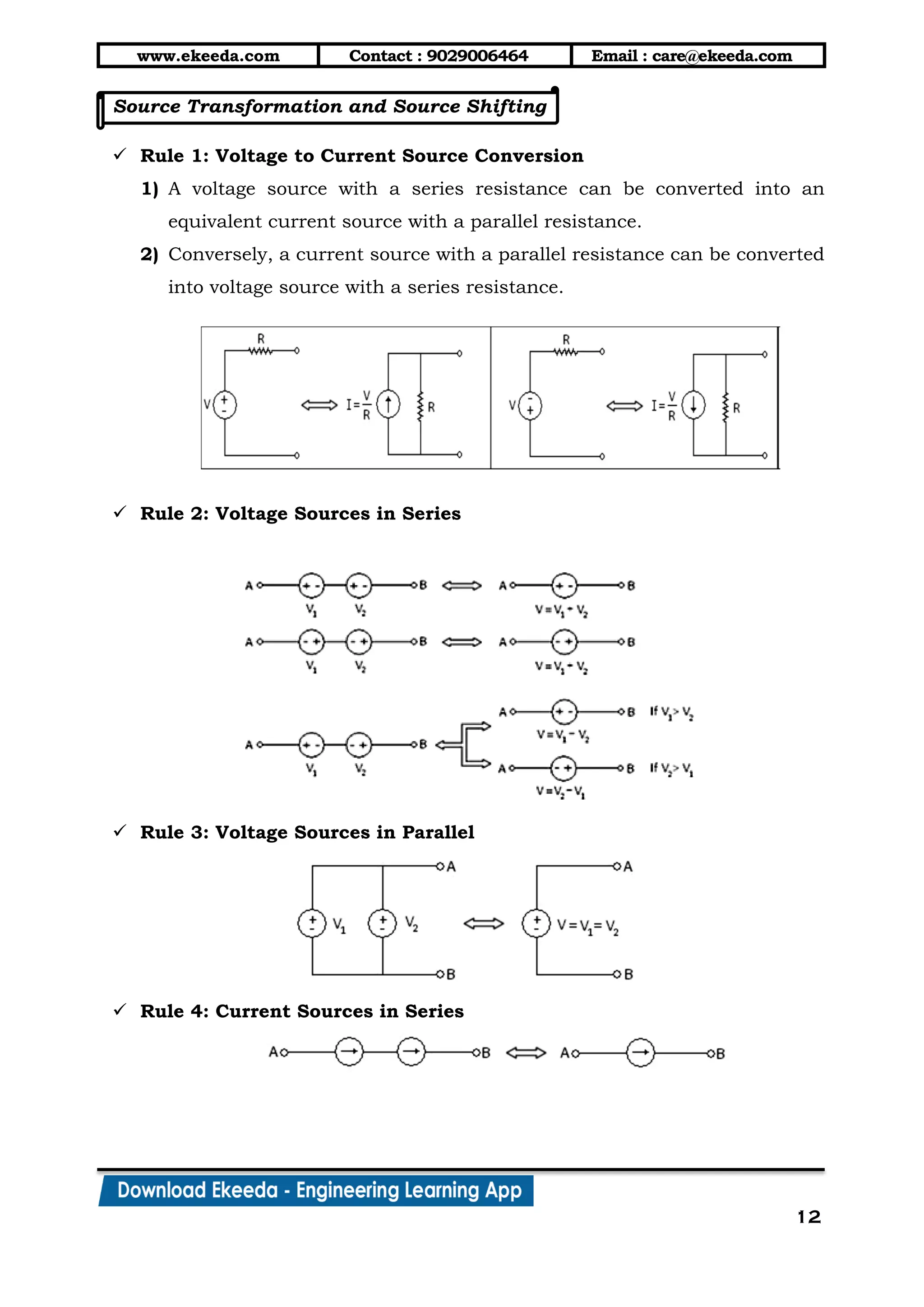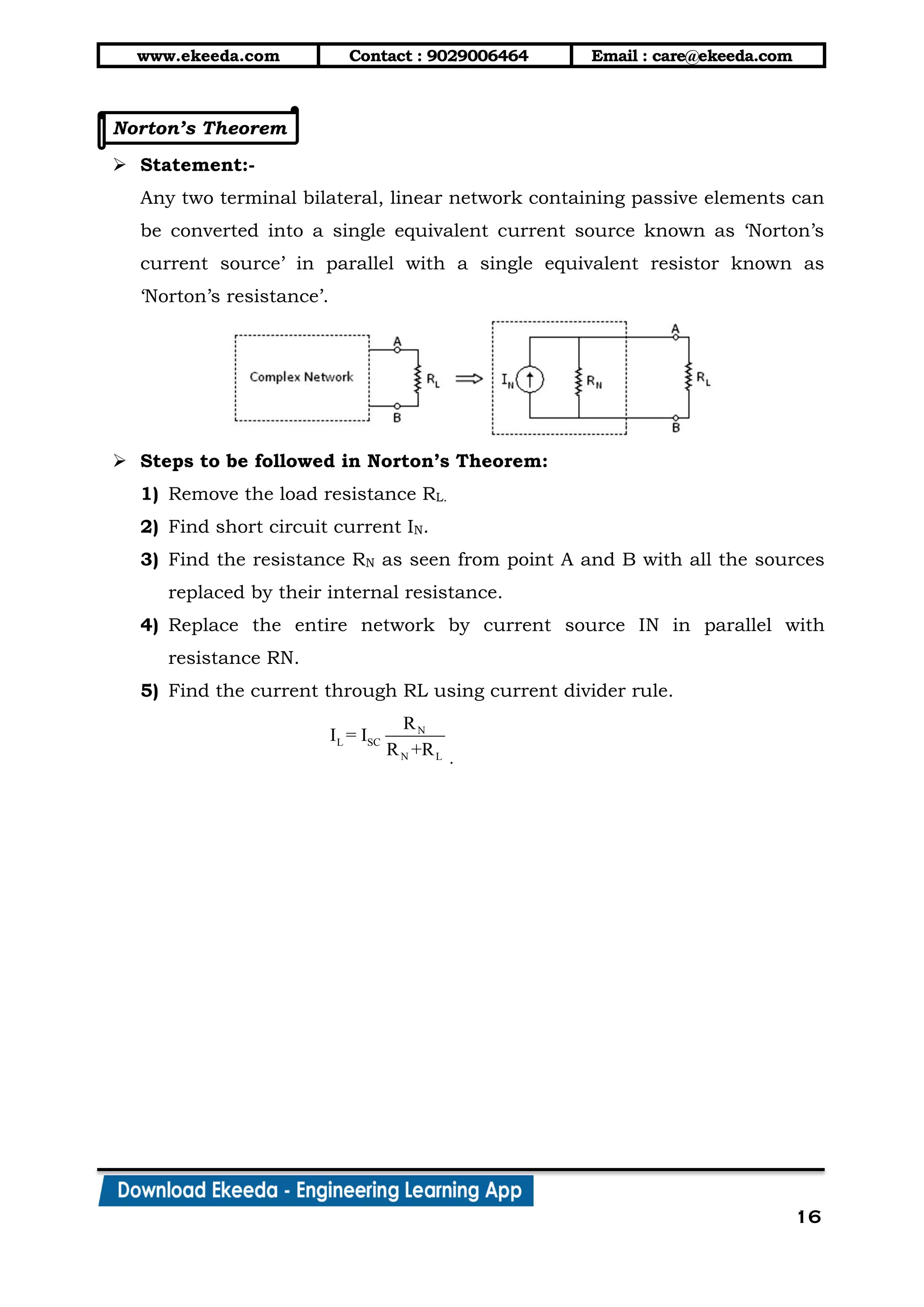The document provides a detailed overview of electrical networks, covering fundamental concepts such as types of sources, Kirchhoff’s laws, and circuit analysis techniques like mesh and nodal analysis. It explains important theorems, including Thevenin's and superposition, and discusses transformations between delta and star network configurations. Additionally, it differentiates between active and passive elements and outlines the characteristics of ideal and practical voltage and current sources.

